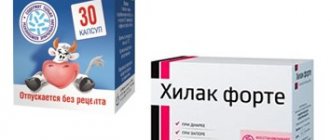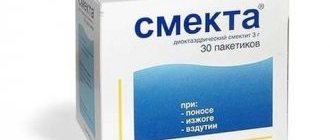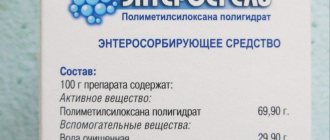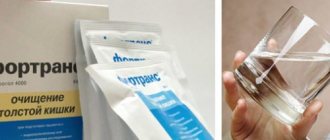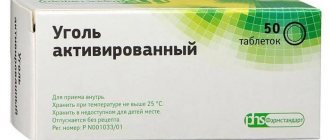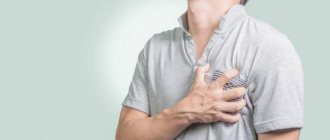strychnine formula
The word alkaloids causes some tension. Not surprising, because these are poisons. Although there is one peculiarity - they will be poisons at a certain dose. All alkaloids have a complex structure and are therefore very active. Thanks to alkaloids, painkillers and narcotics, stimulants and inhibitors appeared in medicine.
In this article, let's reveal the secret of the mysterious strychnine - what it is, how a mortal enemy can be a reliable assistant, and find out how to provide first aid in case of poisoning with this alkaloid.
Strychnine - what is it?
This substance is of plant origin. It is used not only for medical purposes, but also as a poison for rodents. Given the high toxicity, people who are prescribed drugs based on this substance ask: strychnine - what is it? It is known that this remedy was isolated back in 1818. It is obtained in the laboratory. Where is strychnine found and what chemicals does it belong to? This product is a natural indole alkaloid. It is found in the seeds of the chilibuha plant. They are also called "vomit nuts". Chilibuha grows in the tropical climates of Africa and Asia. In addition to strychnine, the seeds also contain other alkaloids. For example, the substance brucine. For medical purposes, strychnine nitrate is prepared in the laboratory, in other words, nitrate salt. In large doses, the alkaloids contained in chilibuha seeds are considered poisons. They are highly toxic and deadly to humans.
Clinical picture of intoxication and treatment
With small doses of poison (0.005–0.01 g), the symptoms of strychnine poisoning are as follows:
- severe anxiety;
- a feeling of stiffness and tightening of the neck and chewing muscles;
- difficulty swallowing;
- muscle tremors;
- increased sensitivity to stimuli (light, sound, touch, etc.);
- difficulty breathing.
When 0.03 g or more of strychnine enters the body, the following symptoms are observed:
- tetanic convulsions in response to the slightest irritation;
- oppressive feeling of fear;
- photopsia - the appearance of bright flashes before the eyes;
- clouding of consciousness;
- involuntary urination and defecation;
- strong contractions of the muscles of the face, arms, and respiratory muscles.
Such symptoms occur in the form of short-term attacks lasting about one minute. Then the muscles relax and breathing is restored. The next paroxysm occurs after 15–20 minutes. Gradually, the duration of seizures increases, and the periods between them decrease. If emergency assistance is not provided, central nervous system paralysis and death occur.
In addition to the specific symptoms characteristic of the action of the toxin, poisoning is accompanied by general symptoms:
- increase in blood pressure;
- tachycardia;
- temperature increase;
- acute chest pain;
- nausea, vomiting.
After the first signs of poisoning appear, the victim must be placed in a comfortable position, restrictive clothing removed and absolute rest ensured, eliminating even the slightest external irritants. Gastric lavage is recommended, but only if there are no convulsions, otherwise aspiration of vomit is possible. The victim should be given a saline laxative and enterosorbents (amount according to instructions).
Strychnine intoxication is deadly. Therefore, the victim should be immediately taken to the toxicology department, where he will be given adequate treatment. Tranquilizers, barbiturates or muscle relaxants are used as an antidote. Another antidote for strychnine is curare-like compounds.
Effects of strychnine on the body
The substance strychnine - what is it? Some data on the effects of this remedy can be found in literary works. Among them are novels by famous classics Jack London and Agatha Christie. In these works, the heroes die as a result of exposure to this poison. In addition, the English writer Herbert Wells describes in one of his stories a biological stimulant, thanks to which a person feels a surge of strength. We are talking about strychnine. In fact, this substance has a similar property. This effect of strychnine is due to the fact that it can block some neurotransmitters. Among them, glycine is a substance that inhibits the conduction of impulses along the spinal cord. Due to this effect, strychnine is considered a nervous system stimulant.
When consuming small doses of this substance, the following processes occur in the body:
- Stimulation of the senses. Thanks to this, functions such as smell, hearing, touch, taste and vision are enhanced.
- Excitation of skeletal muscles and myocardium.
- Strengthening metabolic processes in the body.
- Excitation of the nervous system, including the respiratory and vasomotor centers.
Symptoms of poisoning
The first symptoms of acute intoxication with strychnine appear a few minutes (according to various sources - from 15 to 60) after taking the substance, although cases of delayed action have been described, up to 10 hours after the poison enters the body.
Initial symptoms are specific to this type of poisoning and develop gradually:
- difficulty breathing;
- nagging pain and stiffness, increased tone in the chewing muscles and back muscles;
- slight trembling;
- facial hyperemia;
- worsening of hearing and vision;
- photopsia (bright flashes before the eyes);
- exophthalmos.
Suddenly, an intense painful generalized contraction of skeletal muscles (opisthotonus) occurs, caused by the slightest external irritation. The body arches due to the fact that the back muscles have greater strength than the abdominal muscles.
In addition to specific symptoms, strychnine poisoning is manifested by general symptoms:
- changes in blood pressure (usually an increase, but hypotension is also possible);
- tachycardia or bradycardia;
- increased body temperature;
- chest and abdominal pain;
- nausea, vomiting.
An attack of convulsions, lasting from 1 to 3 minutes, is replaced by extreme relaxation (10–15 minutes), then another attack follows. Convulsive episodes can be repeated up to 3–6 times, then, some time after the next episode of tetanic convulsions, death occurs from asphyxia due to paralysis of the respiratory center and spasm of the respiratory muscles. The victim's consciousness remains until death.
The use of strychnine in pharmacology
Taking into account the effect of strychnine on the nervous system, it is used in medicine. However, medications that contain this poison are used only in cases of emergency. Medicines contain strychnine nitrate. It is practically insoluble in cold water and ether. Nitrate appears as a white powder consisting of crystals. Medicines containing this substance belong to class 1 drugs, that is, they are especially dangerous drugs. Given its effects, strychnine is used for diseases accompanied by inhibition of nerve impulses. The main branch of medicine in which such drugs are used is neurology. In addition to pharmacology, strychnine is used as a poison to combat rodents - mice and rats. Previously, the substance was used only for deratization.
Hitler, beer and male potency
Strychnine has been actively and quite widely used in Europe since the Middle Ages. They used it to poison rats, cats, dogs and other animals.
At the beginning of the 19th century, French doctors tried to treat paralyzed patients with its help. Even successful cases have been described, but the enormous risks associated with the use of this substance outweighed its therapeutic benefits. However, as the interest of official medicine in strychnine faded, its popularity among the general population grew rapidly.
It is curious that Adolf Hitler took anti-flatulence tablets containing strychnine every day for nine years. Given the cumulative ability of the poison, it is difficult to say which of his fatal decisions Hitler made under the influence of the deadly poison.
What medications contain strychnine?
So, “strychnine” - what is it and what medicines does it contain? Drugs containing this poison belong to the group of stimulants of the central nervous system. In pharmacological practice, there are 2 medications containing strychnine. These include:
- Chilibukha tincture. It is a brown liquid with a bitter taste. Strict adherence to the following ratio is necessary: 16 grams of dry matter (chilibukha extract) per 1 liter of 70% alcohol solution. This medicine contains not only strychnine. The composition of the drug also includes other alkaloids, including brucine. The tincture contains 0.25% of the active substance.
- Dry extract of the chilibuha plant. It is also called emetic nut preparation. It is a brown powder. Has no smell. For use, the powder is dissolved in water. In this case, the ratio of 1/10 is maintained. The powder contains about 16% of chilibuja alkaloids - strychnine and brucine.
These medicines do not have commercial names. Used in the form of solution and tablets.
First aid
For people affected by strychnine poisoning without doctors, first aid is of little effectiveness. Gastric lavage should be done only before the first signs of intoxication begin. If those around you know that a person has swallowed poison, then you can try to rid the body of it before strychnine enters the blood, which, unfortunately, happens in a short time. If you do not do it in time, the washing procedure can cause convulsive symptoms.
It is optimal if the victim undergoes gastric lavage in a hospital setting under the guidance of a doctor using prepared instruments. In this case, the victim may be given anesthesia. For this procedure, doctors pour three liters of warm water with sorbents into the patient's stomach. Diuresis is also carried out, that is, the removal of strychnine through urine. Droppers and injections with medications are also prescribed. The victim may need blood purification, which is also available in a hospital setting. The sick person is placed in a separate room, he is given strict bed rest and the absence of any loud sounds or bright lights that can suddenly provoke a new attack. In the soundproofed room where the patient is located, the windows are darkened. The doctor prescribes plenty of warm drinks with alkali. It is prepared in the following way: add half a teaspoon of salt and soda + five small spoons of sugar to a liter of purified water. You can also drink milk, it is an alkaline drink, or buy special mineral water at the pharmacy. All sour-tasting drinks are strictly prohibited.
However, before talking about the use of this substance, it is necessary to say a few words about its chemical and physical properties, effect on the human body and symptoms of poisoning. In other words, the question should be answered: what is strychnine?
Preparations containing strychnine: instructions for use
Considering that strychnine is a particularly dangerous poison, it is very important to follow the instructions for use. Under no circumstances should you exceed the therapeutic dose of the medication! You should also pay attention to contraindications to the use of drugs containing strychnine. Such medications should not be used by children under 2 years of age, pregnant or lactating women. Only the attending physician can prescribe the drug. So, medications containing strychnine: instructions for use.
- Oral administration of the drug. In most cases, the drugs are taken orally. To do this, use an alcoholic infusion of chilibukha and tablets (contain dry extract). Depending on the severity of symptoms, age and weight of the patient. For adults, a dose of 0.5 to 1 mg 2-3 times a day is recommended. If the dosage form of the drug is an alcohol tincture, then 3-10 drops are prescribed (in 1 dose). The maximum dose for adults is 5 mg per day. For children, the amount of active substance is selected individually, depending on body weight. A single dose ranges from 0.1 to 0.5 mg.
- Subcutaneous administration of the drug. A 0.1% strychnine solution is used. The daily dose is considered to be 1 ml (1 ampoule) of the drug.
Indications for use of strychnine
Despite the effectiveness of medications containing strychnine, they are prescribed in rare cases. Most doctors recommend less dangerous medications to patients. However, there are cases when the administration of strychnine is necessary. The following indications for the use of such medications are distinguished:
- Severe neurological disorders. Among them are paralysis and paresis of the limbs after a stroke.
- Lack of appetite. Considering that strychnine nitrate has a strong bitter taste, it stimulates the desire to eat.
- Impaired hearing and visual acuity. In this case, drugs are prescribed only in cases where functional changes in the functioning of the sensory organs are observed.
- Impotence. Currently, drugs containing strychnine are practically not used for erectile dysfunction.
- Chronic alcoholism that cannot be treated with other means.
When is medical attention required?
If you suspect strychnine poisoning, you must immediately call an ambulance or take the victim to the hospital yourself as quickly as possible. The prognosis of the disease depends on the speed of medical care.
The victim is hospitalized in the toxicology department, where the following activities are carried out:
- artificial ventilation;
- administration of tranquilizers, barbiturates or muscle relaxants that are antagonists of strychnine;
- antibiotic therapy for the development of aspiration pneumonia.
After 24 hours, the victim is usually transferred to spontaneous breathing; observation after the poisoning has resolved is usually not required.
Contraindications to the use of strychnine
Preparations containing strychnine are contraindicated for people suffering from diseases of the cardiovascular (angina, hypertension, atherosclerosis) and respiratory system (bronchial asthma, COPD). Also, they should not be used for pathologies of the thyroid gland, liver and kidney failure. It is strictly prohibited to prescribe such medications during pregnancy, lactation, children under 2 years of age and people with a history of seizures.




